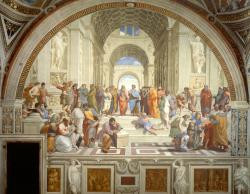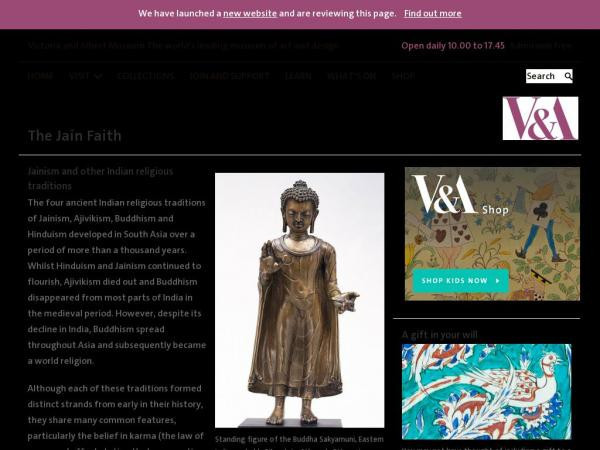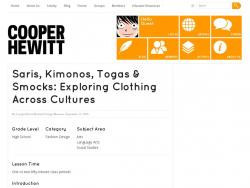Kate Harris
Social Studies teacher
Pittsburgh CAPA
Middle School (13 to 15 years old), High School (16 to 18 years old)
Teacher/Educator
Language Arts And English, Civics, Literature, Cultures, Economics, Social Studies, Geography, Writing, US History, Arts, Other
I'm a history-lover, art fan, and bookworm. I taught high school history (U.S. History and World Religions) for ten years in North Carolina, teach currently in Pittsburgh, PA, and am working to help teachers make the most of this new resource!
Kate Harris's collections
How Siddhartha Became the Buddha
<p>This collection teaches students about the biography of Siddhartha Guatama and asks them to analyze images depicting stages of his life. Students will also learn about the different mudras, or hand gestures, that the Buddha makes. Quiz questions and hot spots are embedded throughout to check for understanding and support learning. </p><p>Tags: Siddhartha, Buddha, Buddhism, reincarnation, religion, India</p>
 Kate Harris
Kate Harris
12
Identifying Characteristics of Renaissance Art
This collection will teach you about how Renaissance artists changed the style and focus of art in the period between 1300 and 1600 CE. When you are done, you should be able to thoroughly answer the question: How did the art of the Renaissance reflect the new emphasis on humanism and science?
First, review the painting, Raphael's School of Athens, and learn about the new techniques used.
Then study the additional works in the collection and try to use them as examples of the different techniques. Some of the works are from the Renaissance period and others are more modern interpretations. A worksheet is included at the end of this collection to record your work.
Finally, test your knowledge with a quick quiz. Use your worksheet to help!
 Kate Harris
Kate Harris
11
Jainism
<p>This is a topical collection of resources related to Jainism. It includes sculptures, manuscripts, and paintings from the Smithsonian Institution's collection as well as links to outside web resources for further background information. Some questions to guide thinking are embedded throughout. </p><p>As they explore the collection, users might consider how Jain art and architecture reflect the main beliefs of the religion.</p><p>tags: ancient, India, religion, Jain, tirthankara, Mahavira, faith, Digambara, Svetambara</p>
 Kate Harris
Kate Harris
12
The Mughal Empire
<p>What is the role of art and culture in the expansion of nations or empires? This collection traces the general history of the Mughal Empire and its influence on Indian art. The Mughals were a dynasty of Islamic leaders who conquered India in the 16th and 17th centuries. Their blend of influences and the stylistic preferences of the emperors created a distinct style. </p><p>Guiding questions to consider are:</p><p>How did the Mughals assert their authority over and create a sense of unity within India?</p><p>Why is art so important to powerful leaders, and how can they influence artistic styles?</p><p>Tags: religion, culture, syncretism, Islam, Muslim, India, Hindu, cause effect, chronology</p>
 Kate Harris
Kate Harris
14
Bushido, Bun, and Bu: Life as a Samurai
This collection includes resources reflecting the ideal characteristics of a Japanese samurai. After reviewing the resources in this collection, students will be able to:
-analyze the changing role of the samurai in Japanese society
-define and give examples of bushido, bun, and bu
-compare the expectations for samurai with those of other social groups
Students will begin by visiting two websites in order to gain background information on samurai. They will then read an excerpt from The Way of the Samurai and answer questions. Next, they will review a series of resources and determine whether they represent bushido, bun, or bu. Finally, students will begin a comparative research assignment.
 Kate Harris
Kate Harris
16
Samurai Armor
This collection invites students to consider samurai armor as both functional and expressive objects. The collection includes two informative videos, several examples of samurai armor, photographs, and quiz questions. It finishes with an optional extension activity to make and decorate an origami samurai helmet. This collection can be used independently by students.
Guiding questions to consider are:
1) Why does the material, design, and purpose of an item of clothing matter?
2) How did samurai use their armor to affirm their social status?
3) How did samurai armor evolve over time and reflect changes in Japanese culture?
 Kate Harris
Kate Harris
19
1950s Conformity and Counterculture
The 1950s were a period of post-war peace and prosperity. The growing economy and baby boom led to a culture of consumerism and growing Cold War tensions led to an embrace of all things American. This student activity includes a number of images reflecting the 1950s (most of them in postage stamp form). After investigating these images and evaluating how they support or challenge conformity, students are asked to research the counterculture that began to develop in the 1950s. The final assessment asks students to create a stamp image reflecting one of the people, events, or movements that pushed back against 1950s conformity. <br /><br />
Guiding questions:<br />
-What caused a sense of American conformity to develop in the 1950s? How was this feeling expressed?<br />
-What challenges to conformity existed in the 1950s?<br />
-Is it more "American" to conform or to rebel?
 Kate Harris
Kate Harris
19
The Seventies: A Crisis of Confidence
<p>This is a teaching collection designed to support an inquiry into why the public lost confidence in the government in the 1970s (70s). Topics covered include the economic recession, the Nixon presidency and Watergate, the Ford presidency, the Carter presidency, the Iran hostage crisis, the oil embargo, the Kent State massacre and the Pentagon Papers.</p><p><br /><br /></p><p>Guiding questions:<br /></p><p>-Why did the U.S. public lose confidence in the presidency in the 1970s?<br /></p><p>-What impact did economic crises have on American lives?</p>
 Kate Harris
Kate Harris
14
The Black Arts Movement
<p>"On the relationship between the Black Power and Black Arts movements, Larry Neal writes, “Black Art is the aesthetic and spiritual sister of the Black Power concept. … The Black Arts and the Black Power concept both related broadly to the Afro-American’s desire for self-determination and nationhood.” The artists within the Black Arts movement sought to create politically engaged work that explored the African American cultural and historical experience and transformed the way African Americans were portrayed in literature and the arts."</p>
<p>This topical collection includes background information as well as examples of poetry and art from the Black Arts Movement. Two excerpts from essays are also included. There are also some examples of works from artists who rejected the premise of the Black Arts Movement. </p>
<p>Students could use this collection as a starting point for further research or to create an illustrated timeline of the movement. Works could be analyzed for their reflection or rejection of themes like: black nationalism, self-determination, "the black is beautiful" movement, and liberation. Students could also evaluate the merits of the arguments for and against a "black arts movement" as articulated by Karenga and Saunders in the text excerpts.</p>
<p>This is a work-in-progress based on the digitized materials within the Smithsonian Learning Lab's collection--it is not meant to be wholly definitive or authoritative.<br /></p>
 Kate Harris
Kate Harris
39
What Do You Think? Dropping the A-bombs to End World War II (WW2)
This collection asks students to create their own exhibit on a controversial subject: the use of atomic weapons on Hiroshima and Nagasaki to end World War II. Students will create a collection that includes five items reflecting their answers to the following questions:
-How should the bombings of Hiroshima and Nagasaki be remembered?
-Was it necessary to drop the atomic bombs in order to end World War II?
Students should consider both long-term and short-term effects in their responses.
 Kate Harris
Kate Harris
24
Cold War Fears
<p>This is a topical collection about American fears during the Cold War. What were Americans afraid of? How were these fears expressed in United States culture? How successfully did the government address these fears?</p><p><br /><br /></p><p>Students and teachers may want to explore the resources in this collection to consider the psychological impact of the Cold War and how Americans prepared themselves for the unknown. </p><p><br /><br /></p><p>Tags: Cold War, McCarthy, UFOs, aliens, space race, fallout shelters, Civil Defense, radiation, spies, Hiss, Rosenberg, Murrow, Sputnik, cause and effect</p>
 Kate Harris
Kate Harris
15
LGBT Rights and History
<p>This teaching collection contains resources to support a more inclusive United States history curriculum. It includes documents, videos, and websites related to the LGBT (Lesbian, Gay, Bisexual, Trans-, and other sexual minorities) movement. The collection is divided into the following themes:</p><p>-People</p><p>-Pride and Diversity of Experiences (reflecting a range of LGBT identities)</p><p>-History, Challenges, and Accomplishments</p><p>-Additional Resources</p><p>This is a work-in-progress based on the digitized materials within the Smithsonian Learning Lab's collection--it is not meant to be wholly definitive or authoritative. </p>
 Kate Harris
Kate Harris
43











